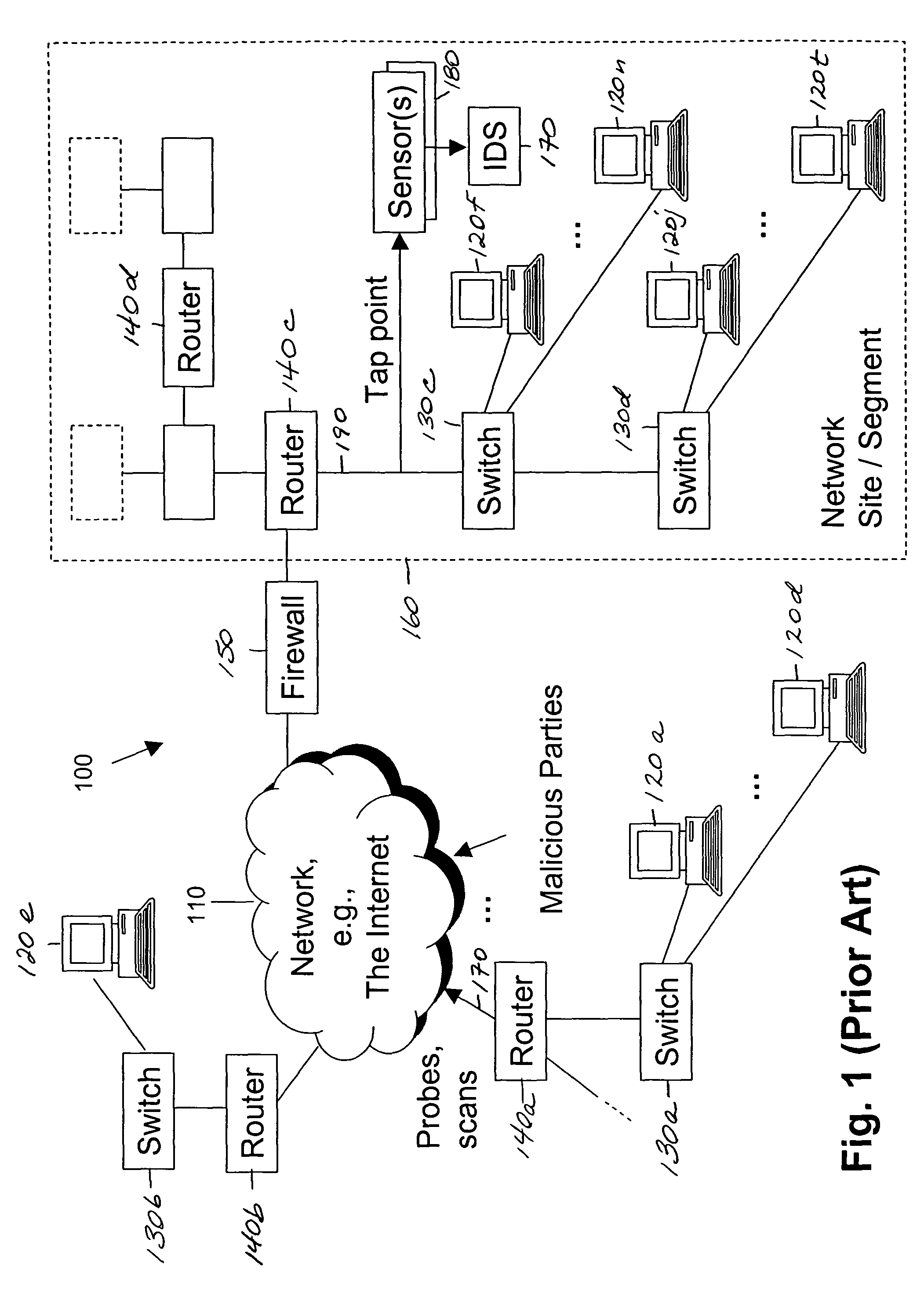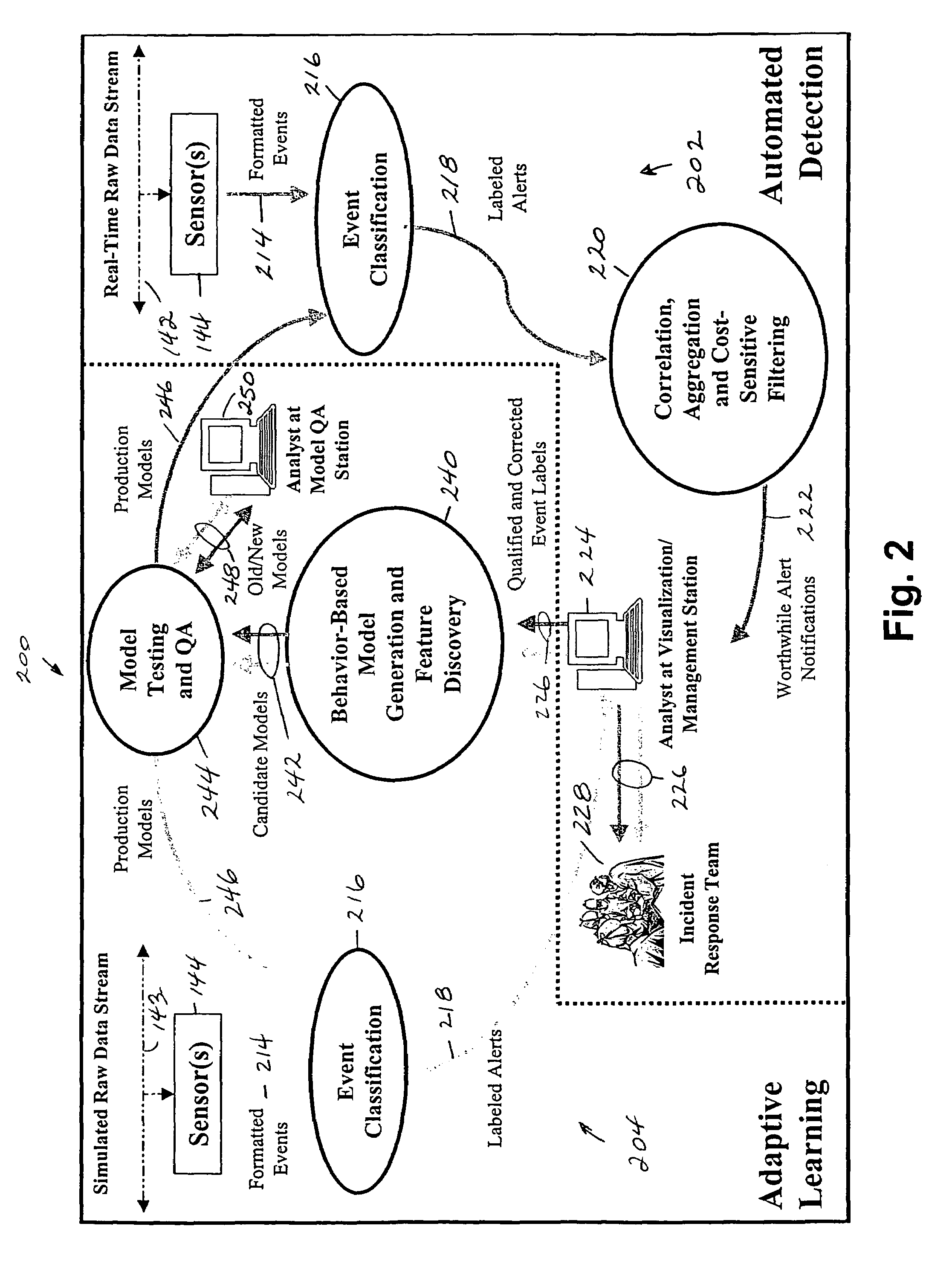Detecting probes and scans over high-bandwidth, long-term, incomplete network traffic information using limited memory
a network traffic and memory limitation technology, applied in the direction of program control, unauthorized memory use protection, instruments, etc., can solve the problems of unreliable or unusable computer systems, inability to detect probes and scans over long-term, incomplete network traffic information, and inability to detect probes and scans. to achieve the effect of preventing stealthy attacks
- Summary
- Abstract
- Description
- Claims
- Application Information
AI Technical Summary
Benefits of technology
Problems solved by technology
Method used
Image
Examples
Embodiment Construction
Method
[0047]A preferred embodiment of the invention comprises two main processes utilizing three detectors: a scan probe detector, an intrusion detection system and an anomaly detector. As shown in FIG. 2, an automated scan / probe detection method 202 continually monitors network traffic and generates and presents alerts to analysts so that they may take preemptive or remedial action. The automatic detection method 202 comprises three main subcomponents: sensing 144, event classification 216 and filtering operations 220. In the sensing step, sensor(s) connect to one or more network tap points, and recognize and format significant events 214, e.g., IP connections. Event classification 216 receives events 214, detects surveillance activity, and outputs labeled alerts 218. The alert labels include information such as connection addresses and an invariant connection identifier. Event classification 216 utilizes one or more parameterized models, the parameters being determined either auto...
PUM
 Login to View More
Login to View More Abstract
Description
Claims
Application Information
 Login to View More
Login to View More - R&D
- Intellectual Property
- Life Sciences
- Materials
- Tech Scout
- Unparalleled Data Quality
- Higher Quality Content
- 60% Fewer Hallucinations
Browse by: Latest US Patents, China's latest patents, Technical Efficacy Thesaurus, Application Domain, Technology Topic, Popular Technical Reports.
© 2025 PatSnap. All rights reserved.Legal|Privacy policy|Modern Slavery Act Transparency Statement|Sitemap|About US| Contact US: help@patsnap.com



